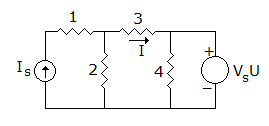Electronics and Communication Engineering - Networks Analysis and Synthesis
Exercise : Networks Analysis and Synthesis - Section 3
- Networks Analysis and Synthesis - Section 14
- Networks Analysis and Synthesis - Section 27
- Networks Analysis and Synthesis - Section 26
- Networks Analysis and Synthesis - Section 25
- Networks Analysis and Synthesis - Section 24
- Networks Analysis and Synthesis - Section 23
- Networks Analysis and Synthesis - Section 22
- Networks Analysis and Synthesis - Section 21
- Networks Analysis and Synthesis - Section 20
- Networks Analysis and Synthesis - Section 19
- Networks Analysis and Synthesis - Section 18
- Networks Analysis and Synthesis - Section 17
- Networks Analysis and Synthesis - Section 16
- Networks Analysis and Synthesis - Section 15
- Networks Analysis and Synthesis - Section 1
- Networks Analysis and Synthesis - Section 13
- Networks Analysis and Synthesis - Section 12
- Networks Analysis and Synthesis - Section 11
- Networks Analysis and Synthesis - Section 10
- Networks Analysis and Synthesis - Section 9
- Networks Analysis and Synthesis - Section 8
- Networks Analysis and Synthesis - Section 7
- Networks Analysis and Synthesis - Section 6
- Networks Analysis and Synthesis - Section 5
- Networks Analysis and Synthesis - Section 4
- Networks Analysis and Synthesis - Section 3
- Networks Analysis and Synthesis - Section 2
21.
Given Is = 20 A, Vs = 20 V, the current I in the 3 Ω resistance is given by


Answer: Option
Explanation:
Is = 20, vs = 20
Using superposition theorem with vs = 0

Is = 0, current in 3Ω 
 in opposite direction, net current
in opposite direction, net current  8A - 4A
8A - 4A  4A.
4A.
22.
A square current wave of magnitude 1 A is applied to an element for 5 seconds. The voltage across the element rises linearly from 0 to final value linearly. The element is
Answer: Option
Explanation:
Charge across capacitance increases linearly. Since capacitance is constant, voltage increases linearly.
23.
A periodic voltage v(t) = 1 + 4 sin ωt + 2 cos ωt is applied across a 1 ohm resistance. The power dissipated is
Answer: Option
Explanation:

24.
A constant k high pass p section has a characteristic impedance of 300 Ω at f = ∞ . At f = fc, the characteristic impedance will be
Answer: Option
Explanation:
For constant k high pass p section  At f = fc, Z0p = infinite.
At f = fc, Z0p = infinite.
25.
If A = 4∠7°, A2 is
Answer: Option
Explanation:

Quick links
Quantitative Aptitude
Verbal (English)
Reasoning
Programming
Interview
Placement Papers